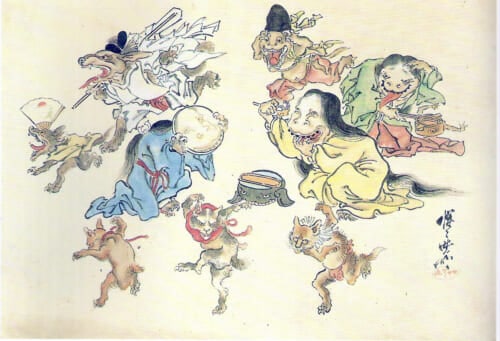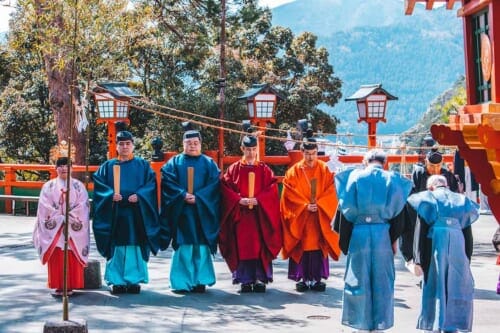When you first start studing Japanese, you are going to learn your first words such as arigatou, itadakimasu or gomennasai. And today we are going to focus on this last one. This word means “I’m sorry” and is a fundamental part of Japanese etiquette. But did you know that gomennasai has several variations, each with a different nuance depending on the level of formality, gender, and context?
In this article, we’ll explore the different ways to say sorry in Japanese using gomennasai, when to use them, and how they reflect Japanese culture.
What Does Gomennasai Mean?
Gomennasai ごめんなさい is the polite form of saying “I’m sorry” in Japanese. It is suitable for most everyday situations, especially when you want to express sincere regret. Because apologizing is such an essential part of Japanese communication, where maintaining harmony and showing empathy are highly valued, gomennasai becomes a key phrase to know and use correctly.
Informal and Formal Variants of this Word
The full version, gomennasai, is considered polite and formal. But in casual conversation, especially among friends or family, the shortened form gomen ごめん is often used. This more relaxed version is common among children, teenagers, and people in familiar settings. It conveys the same meaning but feels lighter and less serious. You might use gomen if you bump into someone accidentally or are running late for a casual meeting.
Cute and Feminine: Gomen-ne
Among younger speakers, especially girls and women, you’ll often hear the variation gomen-ne ごめんね. The suffix -ne adds a soft, friendly tone, similar to saying “sorry, okay?” or “please forgive me” in a gentle way.
This version is often associated with pop culture, and you’ll hear it frequently from idols, anime characters, or in conversations meant to sound cute and affectionate. It’s less about a formal apology and more about emotional tone.
Masculine and Casual: Gomen-na
On the other side of the spectrum, gomen-na ごめんな is a version typically used by men. It sounds rougher and more casual, often heard in anime, films, or among male friends.
Although it may come off as blunt, it can still be friendly or even endearing, depending on the speaker’s tone. It’s rarely used in formal situations, but it’s good to recognize it when you hear it in informal settings.
Other Useful Ways to Say Sorry in Japanese
Another word often used to say “sorry” is sumimasen すみません. While gomennasai is used when expressing regret for something you did, sumimasen can be used to apologize and to get someone’s attention, like saying “Excuse me.” It is also slightly more polite and versatile than gomennasai.
So, which one to use?
- Use gomennasai when you’ve hurt someone or made a mistake.
- Use sumimasen when interrupting someone, asking for help, or expressing mild regret.
Gomen Kudasai
This polite phrase combines gomen (sorry) with kudasai (please) ごめんください. It’s used when visiting someone’s home to say, “Excuse me, may I come in?” — especially when knocking on the door or entering without being seen.
It can also be used to politely grab someone’s attention in public settings, such as charity collectors calling out to passersby.
Honto ni Gomennasai
This phrase means “I’m truly sorry” or “I sincerely apologize.” It expresses deep remorse and is used in serious situations, such as in public apologies from companies or politicians.
You may hear this on the news when someone takes full responsibility for an error that has caused harm. Saying hontou ni gomennasai 本当にごめんなさい with a deep bow emphasizes the speaker’s sincerity and regret.
Using Gomennasai to Show Empathy
In addition to expressing regret, gomennasai can also be used to show empathy or emotional support. In situations involving grief, illness, or bad news, it can function like saying, “I’m sorry to hear that” or “I feel for you.”
For example, if someone tells you about a family member passing away, you can say gomennasai to express your sympathy, even if you’re not apologizing for anything directly. This flexible usage reflects a deep part of Japanese culture: valuing the feelings of others and showing concern through language, even in emotionally sensitive moments.
Learning how to say “I’m sorry” in Japanese is more than memorizing gomennasai. It’s about understanding context, social relationships, tone, and even subtle emotional cues. Whether you’re using the formal gomennasai, the casual gomen, or softer versions like gomen-ne, knowing when and how to use them helps you sound more natural and respectful in Japanese.
So next time you make a small mistake in Japan, try saying gomennasai, it might open more than just a conversation.
Cover Photo: Midory Niwa










No Comments yet!